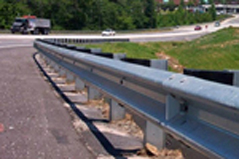Attention
Close
STEEL CONSTRUCTION | Steel Product and Systems
Cold-formed profiles
Cold-formed profiles through bending or profiling presses by continuous process. Several standardized geometries and gauges are offered, in addition to customized ones.
See also:
Brazil Guide of Steel Construction – Profile Manufacturers (available only in Portuguese)
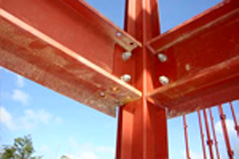
Laminated Profiles
Steel profiles produced through hot-lamination process offered in several standardized geometries and gauges.
See also:
Brazil Guide of Steel Construction - Profile Manufacturers (available only in Portuguese)
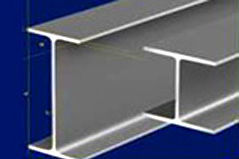
Welded profiles
Profiles produced through welding of steel strips forming I and H sections. Several standardized geometries and gauges are offered, in addition to customized ones.
See also:
Brazil Guide of Steel Construction - Profile Manufacturers (available only in Portuguese)
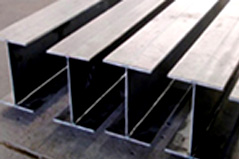
Seamed pipes
Seamed pipes are those manufactured from the bending of closed welded plates. There are two ways to apply welding in the manufacturing of pipes: longitudinal (across the pipe) and spiral. The longitudinal welding process is the most employed one. Seamed pipes can be found in different sizes and sections (circular, square, rectangular, etc.).
See also:
Brazil Guide of Steel Construction – Steel pipes (available only in Portuguese)
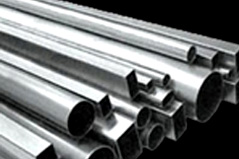
Seamless pipes
Seamless pipes are produced by hot-lamination process from a massive steel bar that is laminated and drilled by a mandrel in order to obtain its final dimensions.
See also:
Brazil Guide of Steel Construction – Steel pipes (available only in Portuguese)
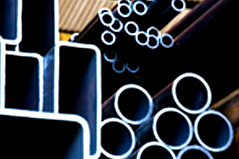
Steel Deck
Steel Deck is a galvanized steel slab formwork that works as a slab positive shielding and as a formwork for the concrete, as well as a working platform.
See also:
Brazil Guide of Steel Construction - Steel deck (available only in Portuguese)
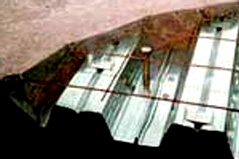
Light Steel Frame
Light steel framing constructive system is made of cold-formed galvanized steel profiles used to make structural panels, beams, scissors trusses and other construction components. As it concerns an industrialized system, it allows for a quick and dry construction.
See also:
Steel Construction Manual - Steel Framing: Engineering (available only in Portuguese)
Steel Construction Manual - Steel Framing: Architecture (available only in Portuguese)
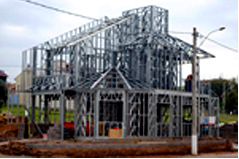
Crating
Steel crating replaces wood in roof structures. High strength galvanized steel profiles that do not require painting are used. The projects benefits from quality, durability and cost with the added benefit of preserving the environment.
See also:
Brazil Guide of Steel Construction – Steel Crating (available only in Portuguese)
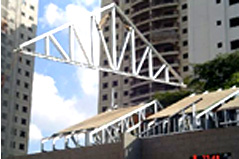
Tiles
Steel tiles are an excellent solution for roofs and side closures for the most varied buildings. The Brazilian market has a huge variety of steel tile models, being the most common: waved, trapezoidal, thermo-insulated, self-supported and zipped.
See also:
Steel tile technical manual (available only in Portuguese)
Brazil Guide of Steel Construction - Tiles (available only in Portuguese)
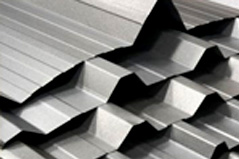
Drywall
Non-structural sealing system of panels made of cartooned plaster plates structured by light galvanized steel profiles. They may be stuffed with material to provide thermal and acoustic insulation. Drywall panels are used mainly as inner divisor walls and lining.
See also:
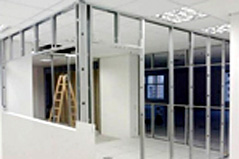
Sealing panels
Sandwich panel made of 2 galvanized steel plates with a thermo-insulating core. They are used as sealing in either inner or outer walls.
See also:
Steel Construction Manual – Sealing Panels – 2nd Edition (available only in Portuguese)
Brazil Guide of Steel Construction - Panels (available only in Portuguese)
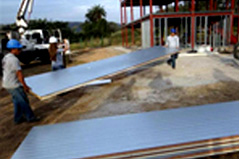
Miter
Miter is the generic designation given to a building component used to close gaps. Most used types of steel miters are: windows, doors, gates, brises, grates, latticework, etc.
See also:
Brazil Guide of Steel Construction – Steel window and door manufacturers (available only in Portuguese)
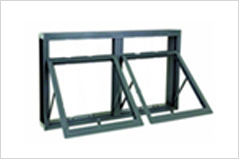
Fenders
Steel fenders are continuous and deformable road protection devices. Fenders have appropriate shape, resistance and dimensions to absorb huge amounts of kinetic energy from most impacts, therefore avoiding uncontrolled vehicles from getting off the road and causing crashes, flips, overturns or collisions. This important safety device acts as a true containment barrier to minimize the severity of accidents.
See also:
Brazil Guide of Steel Construction – Steel fenders (available only in Portuguese)
